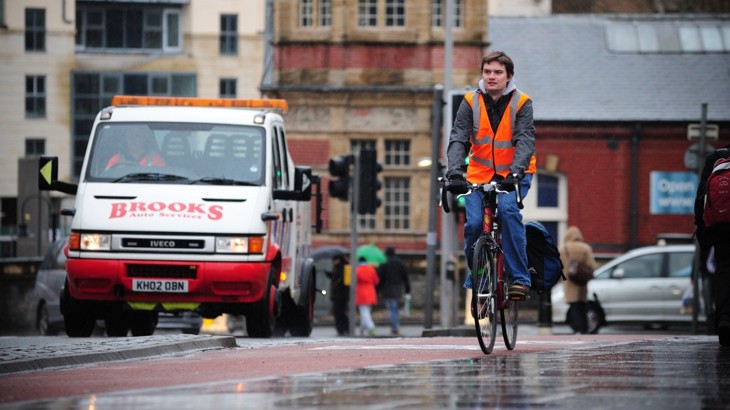The Government is setting its approach for tackling air pollution from particulate matter through a number of consultations but is again missing a great opportunity to rethink the way we move around. Technology is amazing, isn’t it? Who doesn’t like that feeling of a new phone with all the extra gadgets? Well, me actually – but I think I am in the minority. And technology is amazing – it definitely has a role in reducing our carbon footprint in the future through greener energy and in cleaning up our air through a reduction in emissions from motor vehicles as electric vehicles become more reliable and prolific.

But technology can’t solve everything and it can also advance some pretty bad social trends rather than make them better. For example, it has a limited role in tackling one of the most prolific air pollutants: particulate matter (PM).
Adverse health effects of PM
PM is small particles that get into the air. Once inhaled, these tiny particles can penetrate the walls of our lungs and circulate around the body with harmful effects on our health. Like many other pollutants, particulate matter can have a short-term impact over a single, highly polluted day or long-term impacts from low-level exposure over a long period of time.
The World Health Organization has stated that there are no safe levels of particulate matter.
PM comes from various sources, including transport. The Department for Environment, Food and Rural Affairs (Defra) estimate that over 12% of PM comes from transport. This may not sound alarming initially, but the effects are.
This is because our exposure to PM increases the closer we get to the roadside. Transport for London found that 60% of PM10 (particles with diameters that are less than or equal to 10 micrometres ) came from transport, with 15% coming from car exhausts and 45% coming from tyre and brake wear. The Government is consulting on this very issue at the moment.
Our roads need fewer, not just cleaner cars
The problem is moving people from diesel or petrol engine cars to electric doesn’t address PM from tyre and brake wear and there are plenty of unknowns.
PM from brake wear may be somewhat reduced because of regenerative braking that many electric vehicles have, in which the car brakes when you take your foot off the accelerator and recharges the battery. However, any positives from this are likely to be negated by the additional wear of tyres releasing PM due to electric cars being heavier than petrol and diesel cars because of the additional weight of the batteries.
This is all by the by though. As Sustrans has said in our consultation response, we believe the Government is missing an opportunity in the Clean Air Strategy by myopically focusing on electric vehicles. We clearly don’t just need vehicles with cleaner exhausts but still lethal brake and tyre dust on our roads, we need fewer vehicles to clean our air and improve our health. The Government has a chance to nudge people into changing the way they travel for short journeys by making walking and cycling the natural choice.
To do this, the Government must spend less time on technological fixes that move people from one metal box to another and think outside the box themselves. Now is the time for a revolution in local travel that not only reduces the number of car trips and therefore PM, but also benefits our health through the exercise cycling and walking offer.
Simpler, lower-tech solutions are the best step forward
To achieve this revolution, we need to start making changes to our cities which for decades have been designed to benefit the movement of cars.
Pedestrians and people on bikes should have priority in all town and city centres.
Networks of protected cycle lanes on main roads across our towns and cities should be the norm so that everyone feels more confident getting around on two wheels.
Instead of spending so much time on a technological change in vehicles that don’t really address a major source of air pollution at all, the Government should be enacting changes to achieve the targets set out in the Cycling and Walking Investment Strategy to double cycling and increase walking by 2025.
The changes we propose will truly clean up our air; make us all more physically active and reduce congestion for those that need to get around by car.
As Douglas Adams said: “We are stuck with technology when what we really want is just stuff that works.”
A cycling and walking revolution works: for improving air quality; public health and the flow of our towns and cities. Why then is the Government so reluctant to truly commit to it?

